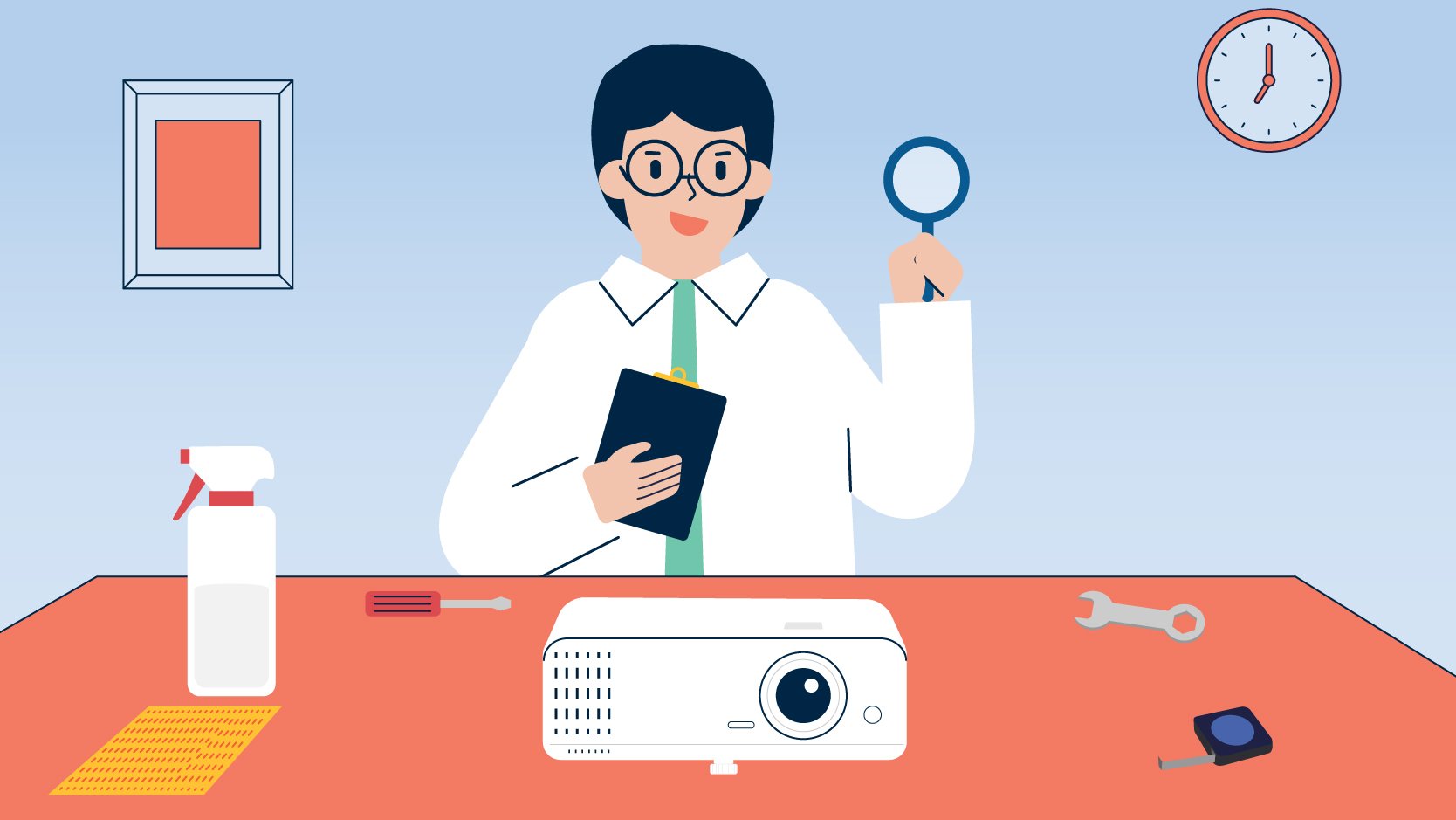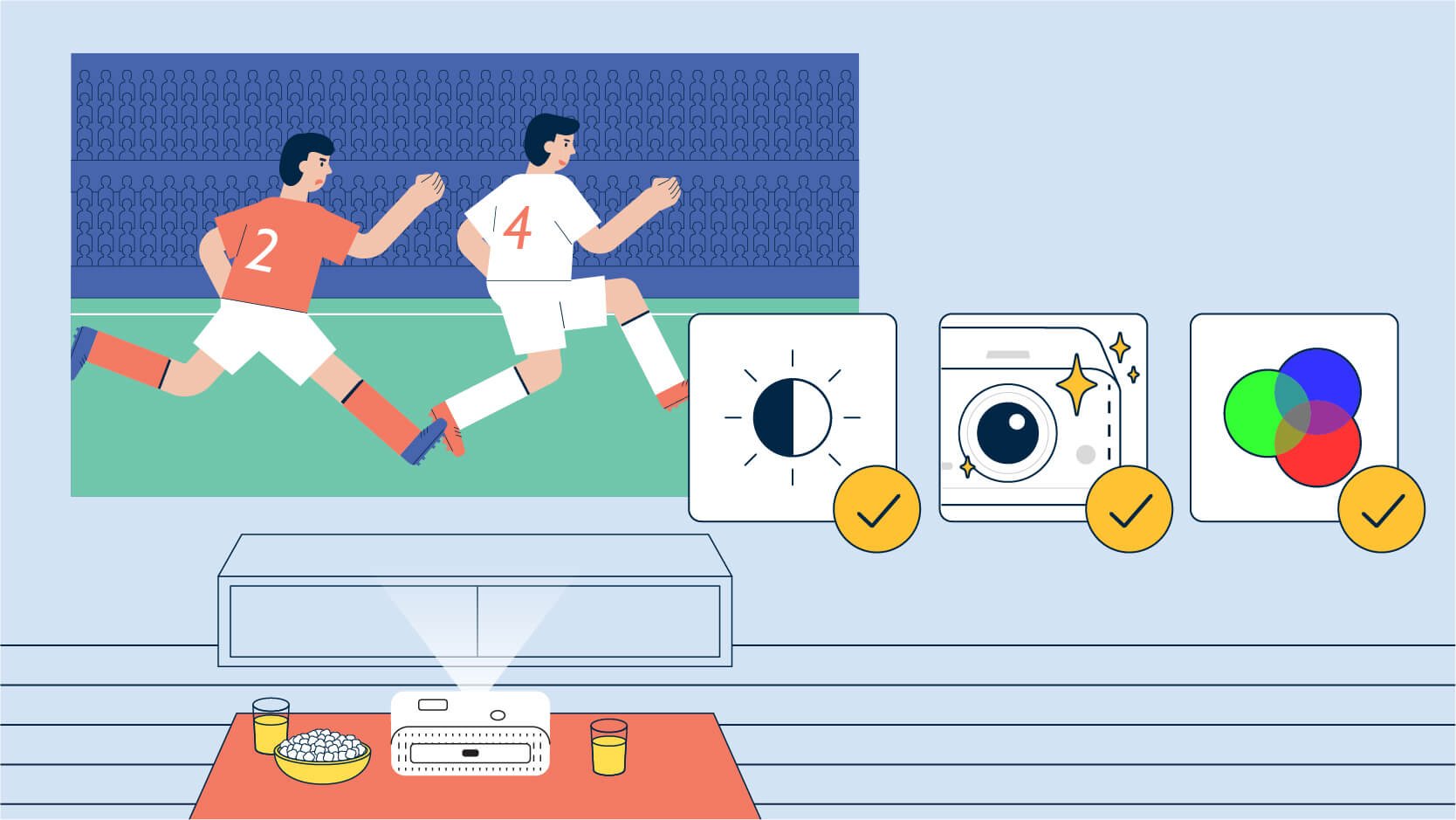

So, you’ve spent the time researching and doing your due diligence regarding which DLP projector you want and are finally ready to pull the trigger. But once the projector is in your hands, given all the time and effort you put into your decision, wouldn’t you want to make sure that your projector performs at its highest level for as long as it can?
As with all products there is no avoiding the grit and grime of long-term use, but steady and consistent care can help prevent drastic decreases in performance and rapid deterioration. What then, are the ways in which you can ensure that your projector performs at its best throughout its lifespan? To ensure a steady performance and a longer lifespan, care for your projector should be taken at each juncture of use, including before, during, and after use maintenance.

The following article will outline some of the steps you can regularly take at each stage of usage to make sure you make the most out of your projector.
• For those who don’t plan to use their projector on a daily basis, or are not anticipating immediate use after purchase, it is suggested that you place your projector in a dust-proof bag. This helps prevent the intrusion of dust and other particles into the projector’s chassis, which may in turn affect the inner workings of the projector and its light source, and consequently the images the projector produces.
• To clean the projector’s exterior, first make sure the projector is unplugged from any power source. Then use a moist cloth to clean the projector’s chassis. DO NOT use any cleaning agents, liquids, or mists. Only use water to moisten your cloth.
• When cleaning the projector, wipe down the plastic panels with the above-mentioned cloth. For glass parts, particularly the lens, only use a microfiber cloth, lens brush/pen, or blower.
• Use a vacuum with a soft brush attachment to clean the projector’s vents.
WARNING : DO NOT remove any external vents or case parts. Opening the unit is a significant risk to you and the product.
• DO NOT obstruct or block any of the vents on the projector’s exterior. This helps prevent the projector from overheating. Examples of behavior not recommended for your projector include placing the projector on a crowded coffee table, a sofa, or a bed. The projector should also not be placed in an enclosed space, such as a bookshelf or drawer, which might impede the continuous flow of air needed to cool the projector.
• If anytime during use your projector produces an abnormal noise or noises that sound like cracking/breaking, immediately power off the projector and unplug it from the power source.


Another way to care for your projector during use is to monitor its picture quality. Here are some steps you can take if picture quality is not ideal:

• Check to see if the image brightness is too low. If so, open the projector’s on-screen menu and check the accumulated hours on the projector’s bulb and then report the issue to customer service.
• Check to see if the image features dirt marks or blemishes. If so first use one of the cleaning tools listed in the previous section to clean the projector’s lens. If this does not solve the issue, contact customer service.
• Check to see if the image’s color is normal. If the color of the image does not match the color you are used to seeing from the projector, take a picture of the image and contact customer service with said picture.
• After powering-off, give the projector some time to disperse heat before you unplug it from the power source. This helps you preserve the bulb’s lifespan.
• Even after it’s cooled off, don’t touch the projector’s lamp. This is because oil from your fingers can leave residue on the lamp that may burn on the surface the next time and thereby impair its performance.
• If you don’t plan on using the projector for a while, unplug the projector from the power source.
• Only use power accessories specifically designated by the manufacturer, including a three-pronged grounded power cord. If you are unsure which accessories to use, contact your local dealer or your local power utility.
• DO NOT touch the power cord with wet hands.
• DO NOT plug your projector into overloaded power strips. This helps prevent the risk of a fire or electric shocks.